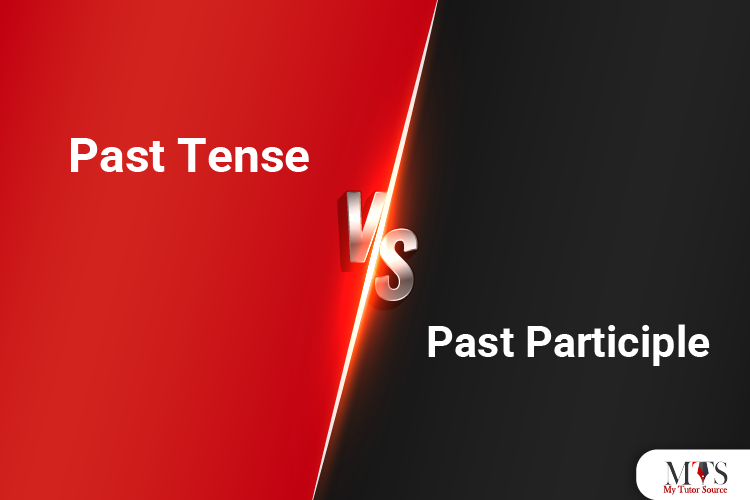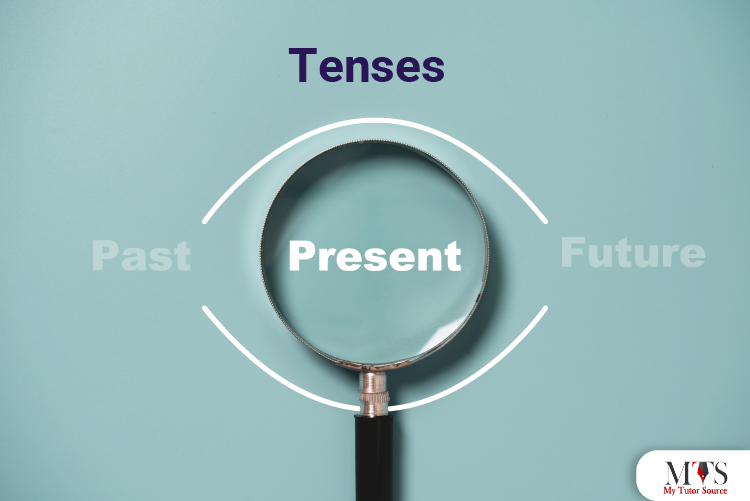

In the English language, we often add time in tenses to describe the event that is happening, has happened, or will be happening in the future. In this way, we get three main forms of tenses, i.e., present tense, past tense, and future tense. Here we have discussed different aspects of past tense and how it differs from the past participle.
Read and learn about how these differences impact sentences and the way you use them from our private tutors.
In English, we use the verbs in different forms to state the time of different actions that are happening or happened. One single verb can be changed to demonstrate different times. Let’s take a look at this with an example of three types of tenses.
If we are talking about a person with the action of “writing,” we can change the verb in three forms to describe three different times.
Past tense: I wrote an article last night.
Present tense: I am writing an article.
Future tense: I will be writing an article tomorrow.
In this way, the verb was changed to three different forms, stating three times related to the action of writing.
Let’s discuss different aspects of the past tense.

When the form of a verb in tenses is used to describe an action, a situation, or any event that has happened already in the past is referred to as past tense. Usually, the suffix ed is added to the present form of the verb, which turns it into past tense.
Usually, the past tense is used in four different types, as discussed below:
Simple past is used to simply state the event or action that has happened in the past. However, the ed suffix is added to the form of the verb to turn it into simple past tense. There are some verbs like put or set that do not change to any form, thus remain the same.
For example:
I worked for an estate agent last year.
She cut the cake yesterday.
This is the type of past tense that is used to describe an event that has happened in the past, and it is also ongoing. For this purpose, usually, the form of a verb, i.e., Was/Were, is used with the verb with suffix, ing.
For example:
He was drinking coffee upstairs.
I was reading my novel when she called me downstairs.
This is the type of past tense that is used to describe an action or an event that has occurred before an action or event in the past. The main purpose of this type of past tense is to make clear which of the two happening events occurred first.
For example:
I had gone to the bookstore before I came home.
She had saved money for buying the car.
This is the type of past tense that is used to describe an event or action that happened in the past before another event stopped it. In other words, when one past event is interrupted by another, then we describe it by the use of this type of past tense.
For example:
I had been cleaning the pool since morning.
She had been roaming in the street for two hours.
As we have discussed the detailed aspects related to the past tense, let’s discuss past participles now.
The past participle is basically the form of the verb that has suffix ed added to it, and it is used to describe an event that has happened in the past.
Usually, the past participle form of the verb is used with a form of helping verb like had, has, have been. In this way, the past participle is used as a passive voice and adjective as well sometimes.
We usually add the word “ed” after the verb when we are writing past participles. For example, they screamed.
Through a slight difference, we can turn the simple past tense verb into a past participle.
Let’s suppose there is a word that could be sleep, study, or jump.
To change these words into a simple past tense, we will add the suffix ed, t, or d at the end, and it will become Slept, studied, and jumped.
In the third step, to turn these simple past tense verbs into a past participle, we will add a helping verb with which will turn these into:
I have slept, have studied, and have jumped.
In this way, the words turned into simple past tense verbs and the past participle.
For example:
He has gone to the school
I have
The main difference between the past tense and past participle is minor yet big. Basically, the past tense is associated with a whole tense, whereas the past participle is associated with a specific form of the verb.
The mixing up of the past tense and participle can sometimes go unnoticed by people because they tend to ignore the form of a verb that should be rightly used.
Suppose we are talking about a place or thing we saw. then saying I seen that jar (past tense) would seem wrong instead of simply saying I saw that jar (past participle)
While past tense is used to describe a certain action or event that happened in the past, past participle, on the other hand, is simply a form of the verb that can not be used alone. It is usually used in some kind of tense to describe a certain event.
When we add a past participle to a sentence, we use a helping verb along with it, and in the past tense, we can simply write the form of the verb without any helping verb, as shown in the following examples.
I ate a sandwich in the morning. (Past tense)
I had eaten a sandwich in the morning. (Past participle)
The past participle can also be used in the form of an adjective as stated in the example below:
We talked about this movie last night. (Past tense)
This movie has been talked about a lot. (Past participle)
We use tenses to describe a certain event that has either happened, is happening, or will be happening. In this way, there are three main tenses that are past, present, and future, respectively. On the other hand, we have past participle that is a form of the verb used with another helping verb to form up certain tenses. The past participle is also used as an adjective sometimes.
Learn all about the tenses and their usage from our expert and certified private English tutors.